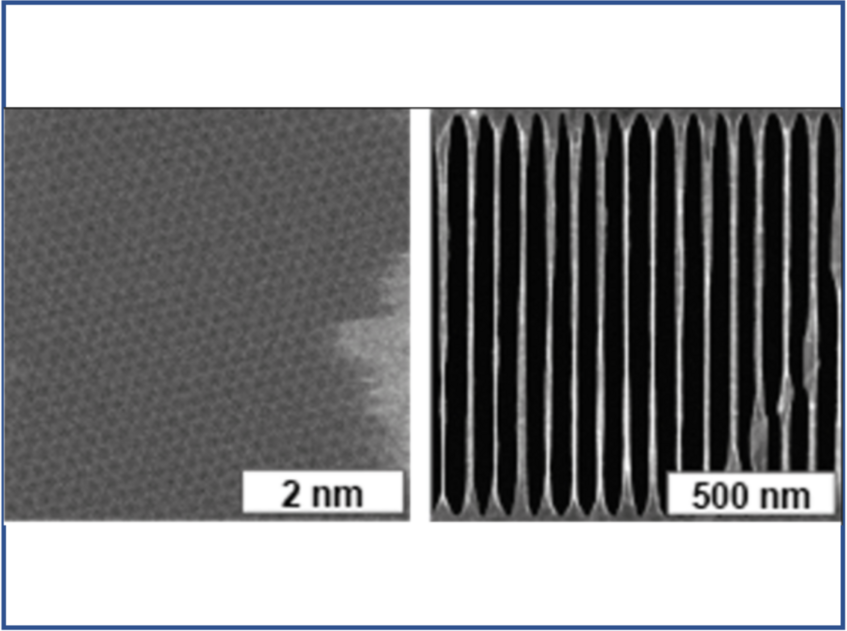Attractive interactions – friend and foe
The interaction of nanomechanical gratings with molecular matter-waves allows us to study the rolel of the attractive van der Waals interaction. Its influence can be inferred from width of the single slit diffraction envelope which encompasses the multi-slit diffraction peaks. The attractive interaction widens the envelope and allows to see the population of high diffraction orders.
For a 45 nm thick grating written in the insulator silicon nitride, we can identify up to the ±9th diffraction order. This realizes an effective large momentum transfer beam splitter for molecular matter-waves.
On the other hand it local interactions can dephase the interferogram and even prevent highly polarizable or polar molecules from reaching the detector. For them, the van der Waals interaction has to be reduced, for instance by minimizing the grating’s thickness.

Reaching the natural limit
We have manufactured and compared different grating materials and grating thicknesses, starting from a tens of nanometers thickness down to 1 nm. We find the smallest attractive interaction realized in a single layer of graphene – a membrane which is only one atom thick.
Since the vdW forces scale linearly with the grating thickness but to the inverse third power with the molecule-wall distance the forces can be further reduced by opening the slits even further. A grating made of carbon nanoscrolls, mader from curled-up ribbons of single-layer graphene, results in wide slits that exhibit the smallest van der Waals interaction in the entire series of diffraction gratings.
References
- C. Brand, M. Sclafani, C. Knobloch, Y. Lilach, T. Juffmann, J. Kotakoski, C. Mangler, A. Winter, A. Turchanin, J. Meyer, O. Cheshnovski, M. Arndt,
An atomically thin matter-wave beamsplitter,
Nature Nanotechnolgy 10 845-848 (2015) - C. Brand, J. Fiedler, T. Juffmann, M. Sclafani, C. Knobloch, S. Scheel, Y. Lilach, O. Cheshnovsky, M. Arndt,
A Green's function approach to modeling molecular diffraction in the limit of ultra-thin gratings,
Ann. Phys. (Berlin), 527 580-591 (2015)
